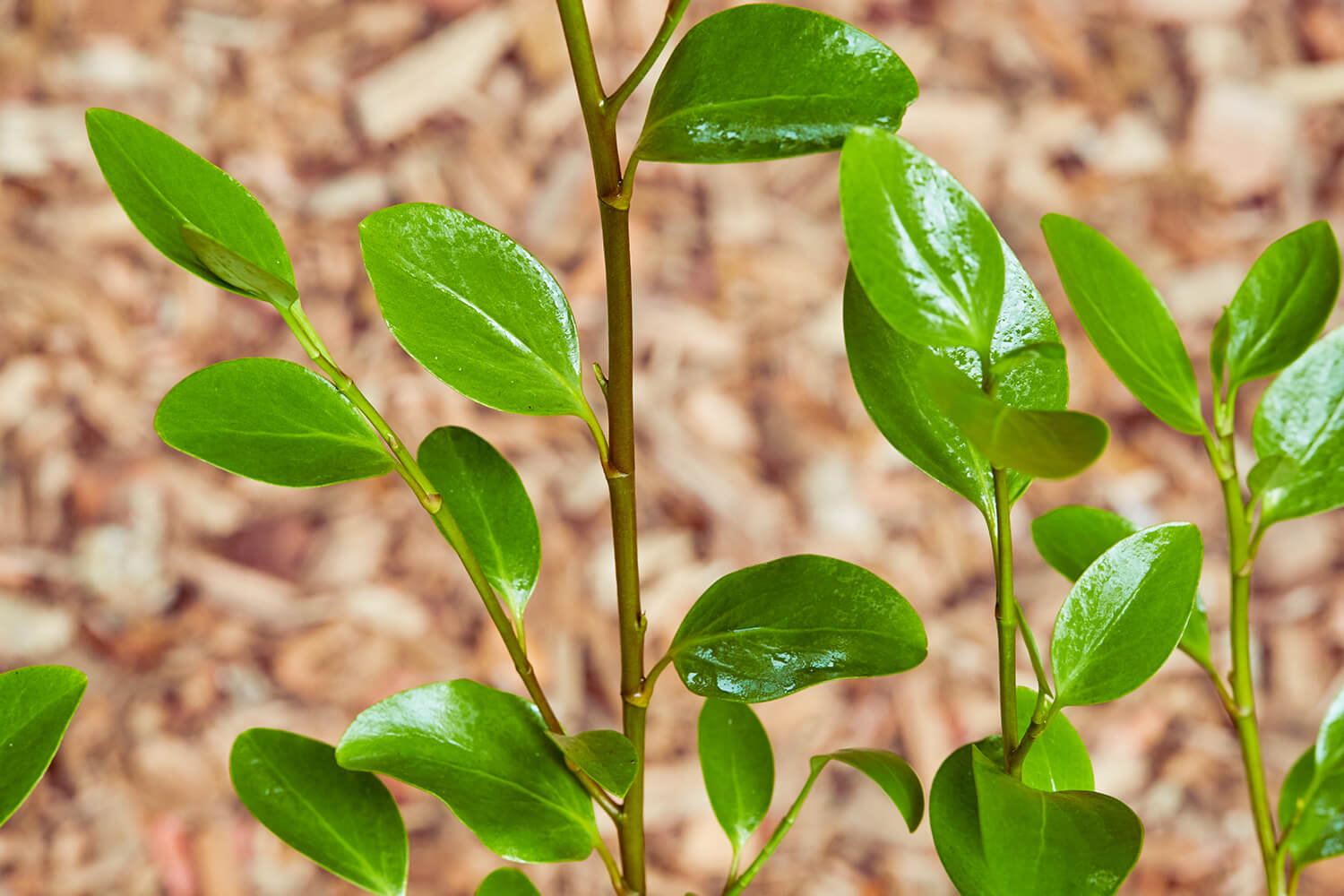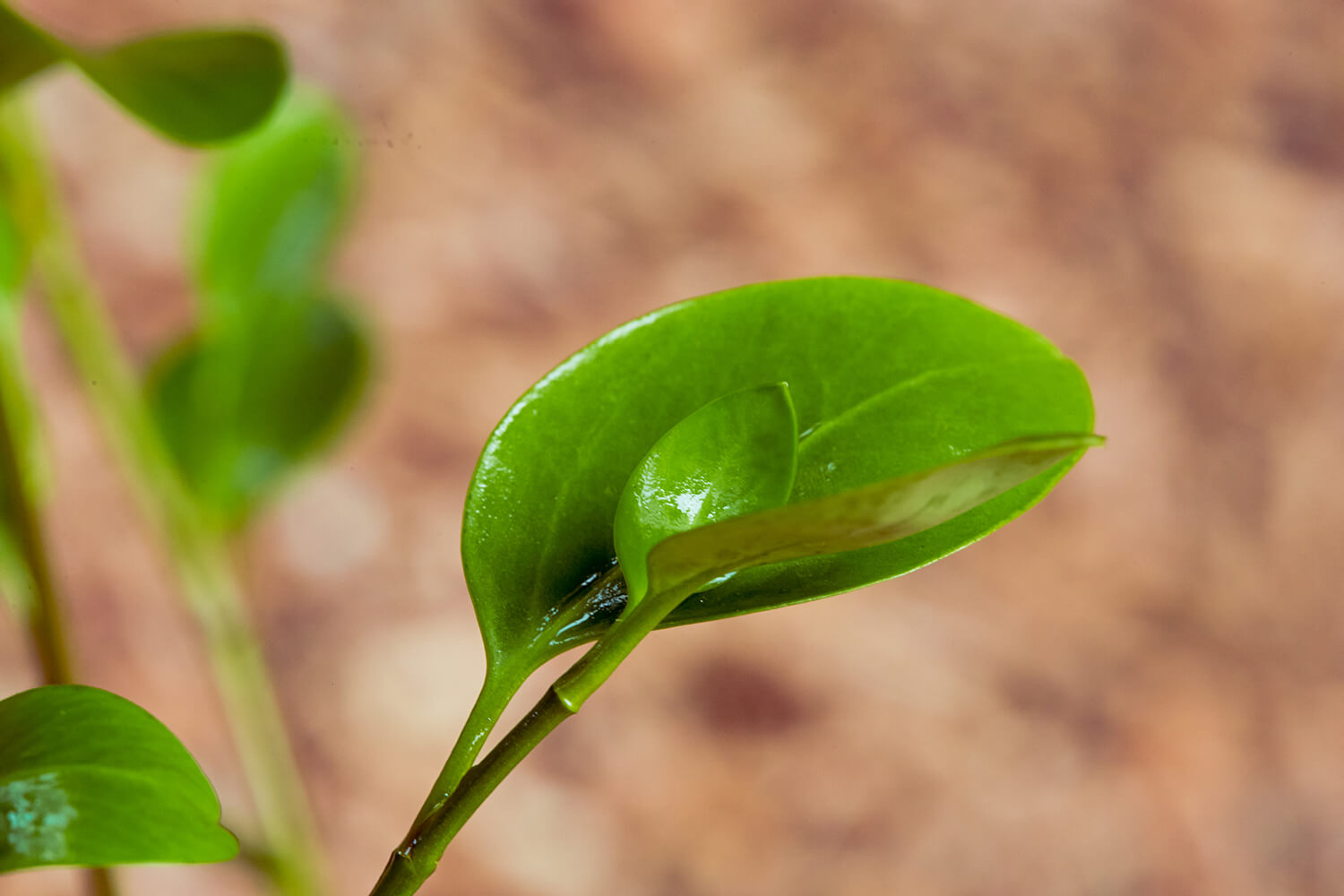Focus on: Griselinia littoralis
For hedging that can withstand changing environments and harsh conditions, Griselinia littoralis is the way to go.
Why choose Griselinia littoralis for your landscape?
Popularly known as New Zealand broadleaf or New Zealand privet, Griselinia littoralis is a fantastic alternative to common hedging varieties. With shiny ovate leaves which keep their fresh, springlike green colour throughout the year, G. littoralis is highly attractive while also being hardy enough to withstand coastal winds and difficult soil conditions. This makes it an obvious choice for exposed or windswept landscapes – and it’s certainly a favourite with Greenwood’s nursery manager, Tom Wozniak.
When deciding on the appropriate hedging for a development, various factors come into play. For almost any of these considerations, Griselinia littoralis scores highly. It occupies the all-important sweet spot of creating good coverage quickly, whilst requiring only moderate maintenance. Easy to manage even when it reaches full height, G. littoralis retains its foliage and colour year-round, has no special soil requirements, can cope with both wet areas and drought, and is resistant to most common pests and diseases. Easily shaped, it can create hedges of varying height and style. Griselinia littoralis provides reliable protection and aesthetic distinction while requiring minimal input, making it a winner for a wide variety of landscapes.
Griselinia littoralis: in brief
✓ Hardy, evergreen shrub, ideal for hedging
✓ Wind resistant, suitable for coastal and exposed areas
✓ Height range from 4m to 10m for mature plants
✓ Plant year round
✓ Grows in all soil types
✓ Fast growing, bushy habit
✓ Low maintenance
✓ Pest and disease free
✓ Drought tolerant
✓ Vulnerable to hard frosts
✓ Prefers full sun
✓ Prefers well-drained soil
How does Griselinia littoralis grow?
G. littoralis is fairly fast-growing, averaging 30cm per year in reasonable soil. It has a compact grow and a bushy habit, making it ideal for hedging as it will quickly fill any gaps and regrow foliage after trimming. Although it can grow to around 10m in height, Griselinia littoralis is more commonly used for hedges of 1-5m. It has an ultimate spread of up to 4m but will achieve effective 1.5m spread fairly quickly. This species is a good choice for hedging to provide eye-level privacy, or for protection in exposed areas.
The main attraction of Griselinia littoralis is its glossy green foliage, since its yellow-green flowers are modest. The purple fruit borne by the female plants also adds interest, when both sexes are planted together.
Where can Griselinia littoralis be planted?
Given a choice, G. littoralis would choose well-drained soil and full sun, although in fact it can thrive in semi-sheltered positions and areas prone to periodic (though not prolonged) waterlogging. It is not particularly resistant to cold, and can sustain damage in temperatures below -6°C (not usually a problem for much of the UK, and its fast regrowth quickly counteracts any browning of foliage).
Besides these modest requirements, Griselinia littoralis is fantastically flexible, doing equally well in clay, sand, chalk or loam, and flourishing whether the soil is acid, alkaline or neutral. One of this plant’s key strengths is its resistance to wind, and it is highly prized for hedging in coastal areas, where it withstands not only the buffeting of harsh sea winds but also the salt spray. G. littoralis will also survive periods of wet or drought, and is happy in full sun or partial shade.

The delightful glossy foliage of Griselinia littoralis.
What care does Griselinia littoralis require?
As a late-flowering evergreen shrub, G. littoralis is best pruned in mid- to late spring, before new growth and after hard frosts. The level of pruning required depends on the look desired. One trim a year is sufficient for an orderly hedge, but more regular pruning can yield a wonderful formal aesthetic. Should the Griselinia littoralis plant be overgrown, it can be cut back hard and still regenerate well. Using mulch and feed can help to encourage the regrowth.
Generally, Griselinia littoralis is pest and disease free, in contrast to other popular hedging varieties. It is, however, vulnerable to frost. Late spring frosts sometimes blacken emerging shoots. However, the shoots regrow in quickly so that the damage is short-lived. Very harsh winters can also cause some browning of the leaves, but certainly no more than usual for other evergreen hedging varieties. This species’ fast regrowth also means that its habitual glowing green look will be restored come spring.


Choosing and planting Griselinia littoralis
At Greenwood we recommend buying G. littoralis as container grown plants, and this is how we grow and provide our own. This gives the option to plant Griselinia littoralis at any time of year. While it is possible to buy them as root-ball plants or bare-root whips, the failure rate can be high. Mixing bone meal and rootgrow into the soil can aid the growth and thorough establishment of your hedging plants, however you buy them.
The number and size of plants you select will depend on your budget and the timescale you are working with. As a rough guide, you will need 4-5 1L plants per metre, 3-4 2L plants per metre and 2-3 plants per metre at larger sizes. If your landscape is not in need of urgent protection from the elements, and you can afford to allow the hedges to mature more slowly, planting smaller or fewer plants further apart will still get excellent results. At Greenwood our Griselinia littoralis plants start at 3cm plugs, all the way up to 20L specimens for instant hedging.
For a slightly denser, wider hedge where a high level of privacy is required or the exposure is particularly great, you can choose to plant a staggered double row. Equally, G. littoralis makes an attractive addition to borders and beds, either as an informally shaped, natural shrub, a stylishly shaped feature, or even a tree. Whatever your landscape needs, you won’t regret choosing this versatile plant for your development.

